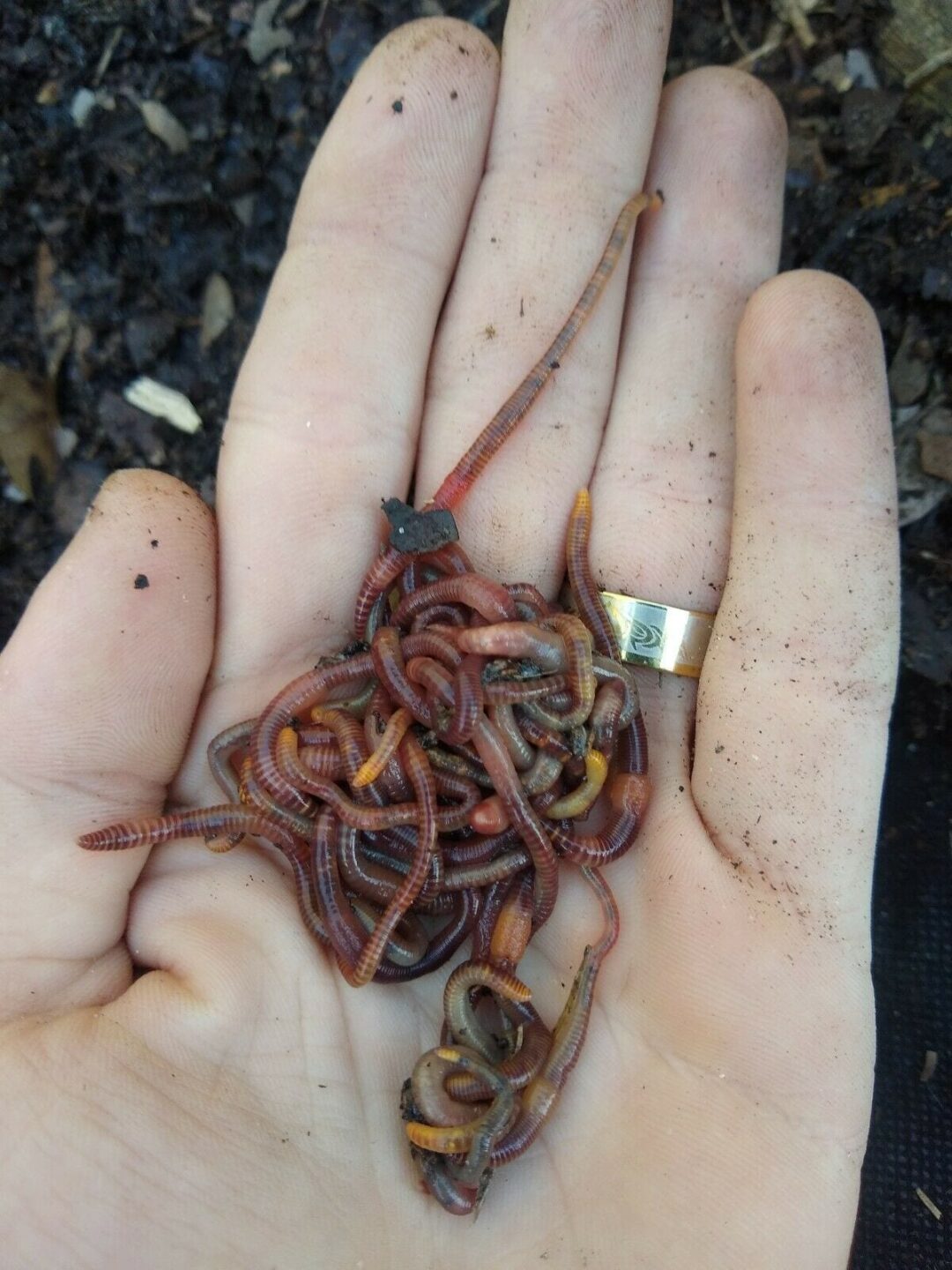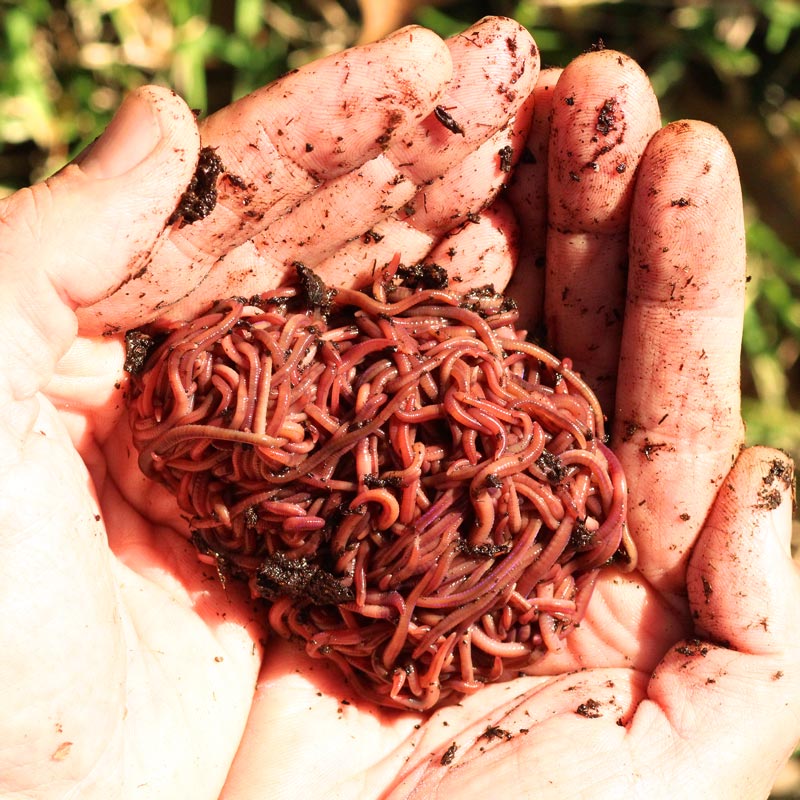Red Wigglers: The Unsung Heroes of Organic Waste Recycling
Red wigglers, or Eisenia fetida, act as important agents in the organic waste recycling procedure, transforming disposed of materials into important vermicompost. Their efficient malfunction of raw material not only boosts soil quality however additionally adds to sustainable waste monitoring techniques. As the world progressively seeks remedies to battle waste accumulation and enhance agricultural productivity, understanding the function of these worms ends up being crucial. What systems permit them to grow in garden compost atmospheres, and just how can they be successfully utilized in both property and commercial settings? Checking out these inquiries exposes the broader ramifications of vermicomposting in our eco-friendly landscape.
What Are Red Wigglers?
The remarkable resilience of red wigglers, scientifically referred to as Eisenia fetida, underscores their crucial duty in organic waste recycling. These small, reddish-brown earthworms are commonly located in decaying raw material, such as compost heap and manure loads. Lake Hickory Bait. Unlike various other earthworm varieties, red wigglers thrive in nutrient-rich environments and are very reliable at breaking down organic materials, making them necessary for vermicomposting

Benefits of Composting With Worms
Composting with worms, especially red wigglers, offers countless advantages that enhance both waste monitoring and dirt health and wellness. Initially, these worms efficiently damage down natural waste, transforming it into nutrient-rich vermicompost that enriches soil. This procedure accelerates decay, permitting a quicker recycling of kitchen scraps and other organic materials contrasted to conventional composting methods.
Additionally, the vermicompost created by red wigglers is brimming with valuable microorganisms, which assist boost soil framework, oygenation, and dampness retention. This enhances the overall health and wellness of plants, advertising energetic development and increased yields in yards and agricultural settings. The usage of worms in composting lessens the manufacturing of greenhouse gases, such as methane, adding to an extra lasting waste management system.

How to Start Vermicomposting
Developing a vermicomposting system is an uncomplicated procedure that can yield significant benefits for both waste monitoring and soil enrichment. To begin, choose an ideal container, such as a Red Wiggler Express plastic bin or wood box, with ample air flow holes to make sure appropriate air flow. The dimensions need to preferably be about 2 feet by 3 feet, enabling ample space for the worms to grow.
Following, prepare bed linens material, which can contain shredded paper, cardboard, or coconut coir. This bed linen needs to be moistened to create an appropriate environment for the worms. Once the bedding remains in location, present red wigglers (Eisenia fetida) right into the container, usually around one pound of worms for every square foot of surface location.
Complying with the placement of worms, include natural waste, such as fruit and veggie scraps, coffee grounds, and crushed eggshells. With these steps, you will successfully initiate a vermicomposting system that adds to sustainable waste management and enriches your soil.
Keeping a Healthy Worm Container
Carefully mixing the bed linen and food scraps every few weeks protects against compaction and makes sure that all worms have access to oxygen. Furthermore, it is important to feed the worms properly.
Temperature level policy is an additional important element. Red wigglers grow in a series of 55 to 77 levels Fahrenheit. If the container becomes also hot or cool, the worms might end up being stressed - Lake Hickory Bait. Occasionally inspect for signs of wellness, such as worm population development and the presence of healthy and balanced castings. By carefully managing these elements, one can preserve a robust and productive worm container.
Influence on Sustainable Living
The effective maintenance of a worm bin not only benefits the wellness of red wigglers however likewise contributes dramatically to lasting living methods. By reusing organic waste, such as kitchen area scraps and backyard particles, red wigglers help divert significant quantities of material from land fills. This reduction in waste not only decreases greenhouse gas exhausts yet also decreases the ecological concern associated with waste administration.
Additionally, the spreadings produced by red wigglers offer as a nutrient-rich organic fertilizer, boosting soil health and advertising plant development. This natural choice to chemical plant foods supports sustainable farming and horticulture practices, decreasing dependence on synthetic inputs that can harm environments. Additionally, worm composting promotes recognition of waste monitoring, encouraging people and areas to adopt even more sustainable behaviors.

Conclusion
In summary, red wigglers serve as essential factors to organic waste recycling through their reliable decay of natural materials. Their ability to generate nutrient-rich vermicompost improves dirt health and wellness and sustains sustainable farming techniques. By integrating vermicomposting right into waste administration methods, people and neighborhoods can significantly reduce waste while promoting ecological sustainability. The duty of Eisenia fetida in promoting healthy and balanced ecosystems underscores the significance of these microorganisms in achieving lasting living and enhancing dirt fertility.
Comments on “Find the Best Products for Lawn Care with Red Wiggler Express for Lush Lawns”